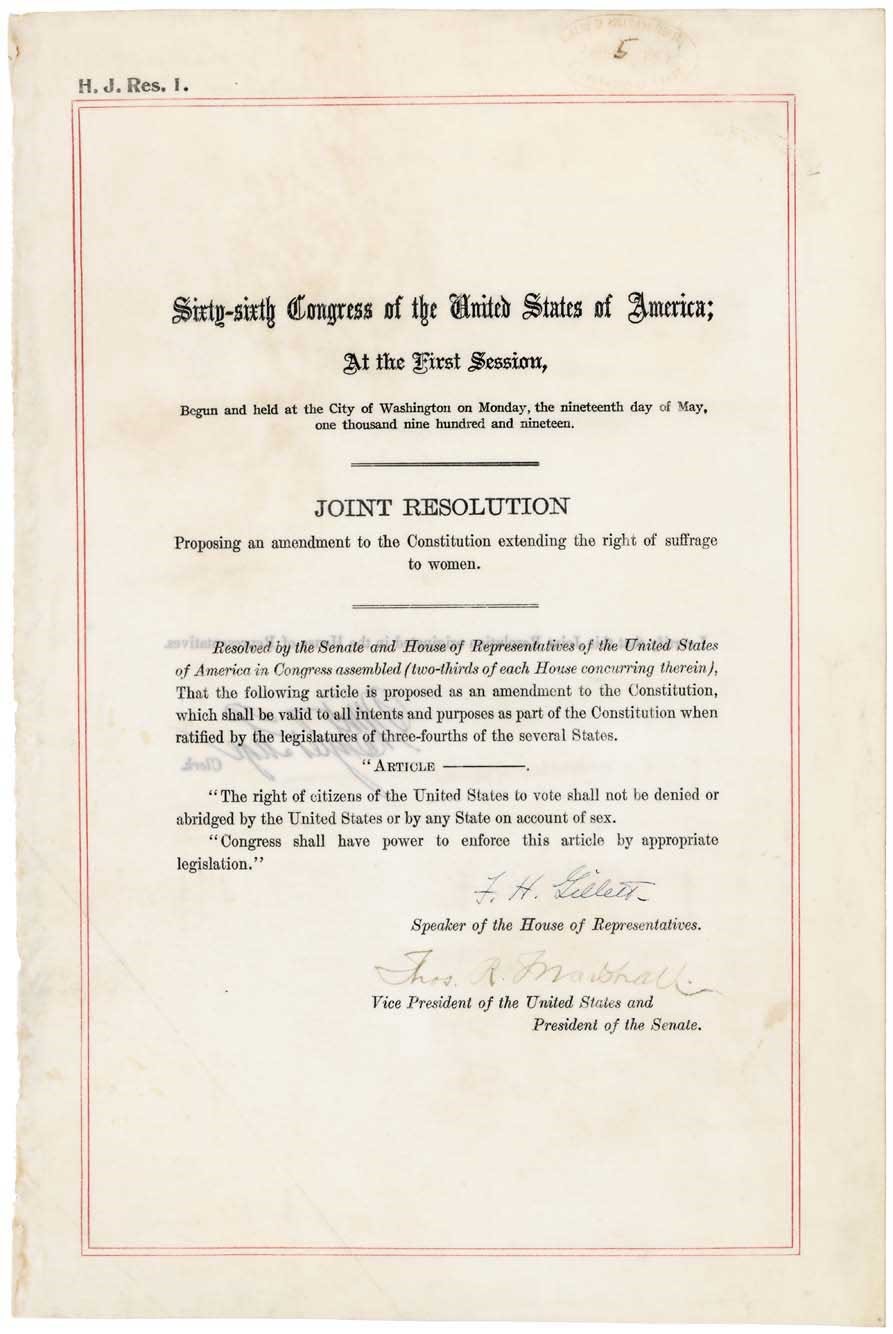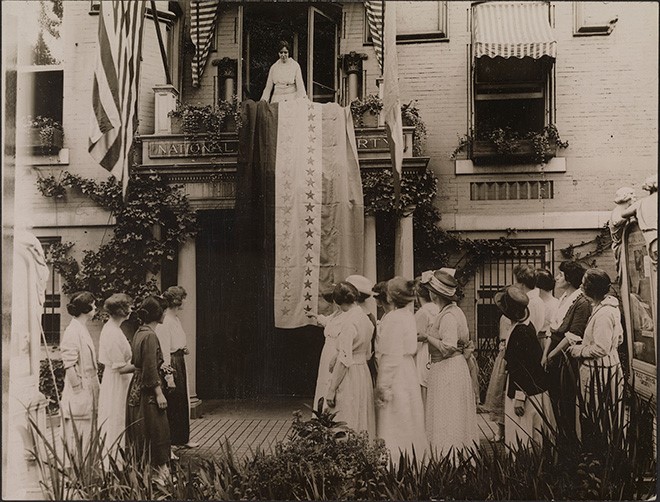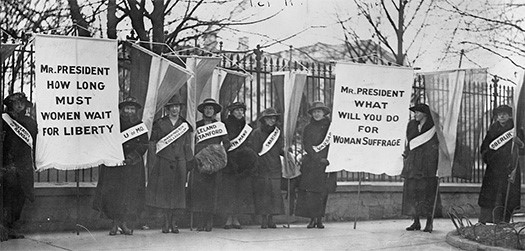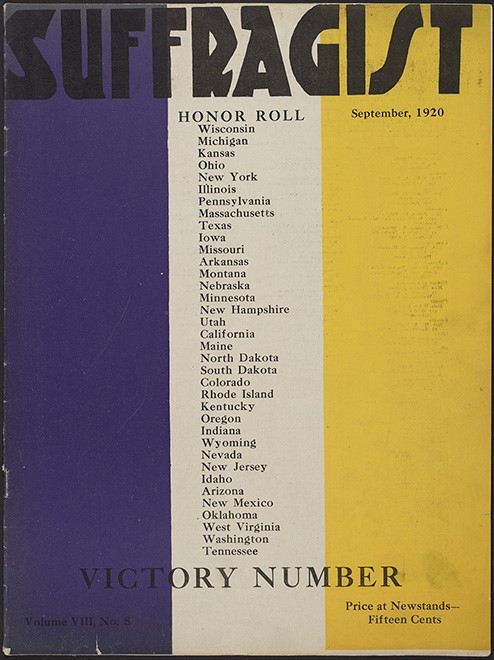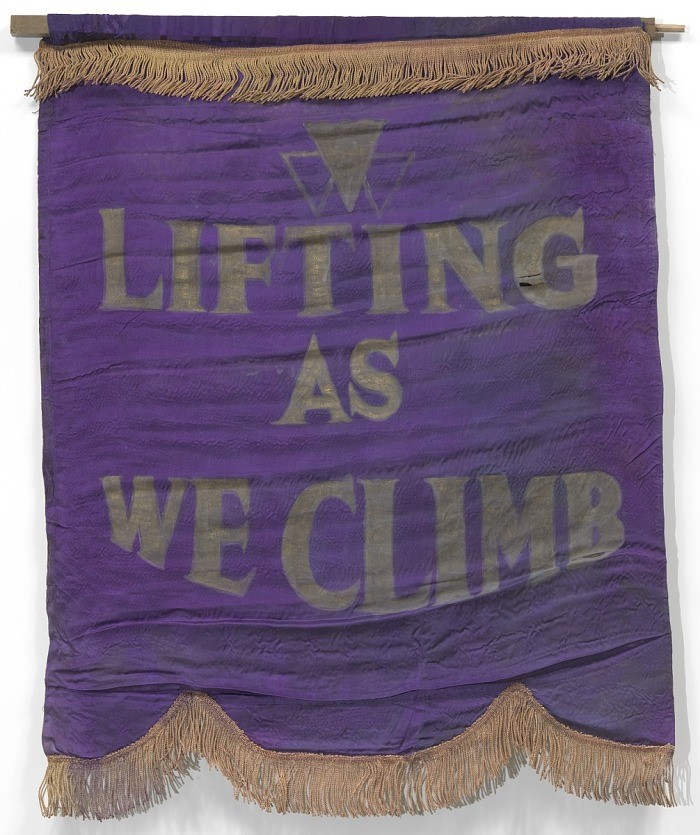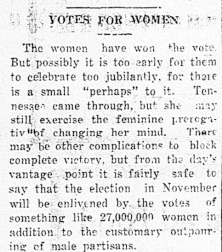August 18, 1920: 19th Amendment is Ratified
Celebrate the 100th anniversary of the 19th Amendment with stories about the people and events that led to the passage of women’s suffrage in the United States.
This week, we celebrate the 100 anniversary of the 19th Amendment’s ratification. On August 18, 1920, a day nearly a century in the making, Tennessee became the last of the needed 36 states (or, ¾ of the United States) to secure adoption of the Amendment.
House Joint Resolution I proposing the 19th Amendment to the States. Image courtesy of the National Archives.
The amendment had initially been introduced to Congress in 1878, but attempts to pass through the House had repeatedly failed. In the following years, countless individuals and activist groups fought toward the goal of granting women their full democratic voting rights.
The 19th Amendment finally passed through the House of Representatives on May 21, 1919, followed by the Senate on June 4, 1919. From there, it was sent to the states for ratification, which took over a year.
Tennessee’s position as the final ratifying state has become something of a legend, coming down to the decision of a 24-year-old state representative named Harry T. Burn. After easily passing the amendment in the Tennessee House, its Senate took longer to come to a decision. Intense lobbying led to what was described as a “War of the Roses” – where supporters of suffrage donned yellow roses to symbolize their loyalty during the legislative proceedings, while anti-suffragists wore red.
After two tied votes, it came down to young Burn, who – after receiving an encouraging letter from his aging mother – broke the tie with an “Aye,” thus putting an end to the back-and-forth, and cementing Tennessee’s role in the history of women’s suffrage.
Tennessee’s position as the final ratifying state has become something of a legend, coming down to the decision of a 24-year-old state representative named Harry T. Burn. After easily passing the amendment in the Tennessee House, its Senate took longer to come to a decision. Intense lobbying led to what was described as a “War of the Roses” – where supporters of suffrage donned yellow roses to symbolize their loyalty during the legislative proceedings, while anti-suffragists wore red.
After two tied votes, it came down to young Burn, who – after receiving an encouraging letter from his aging mother – broke the tie with an “Aye,” thus putting an end to the back-and-forth, and cementing Tennessee’s role in the history of women’s suffrage.
“When Tennessee the 36th State Ratified, Aug 18, 1920, Alice Paul, National Chairman of the Woman’s Party, Unfurled the Ratification Banner from Suffrage Headquarters."
This photo captures suffragist Alice Paul unfurling a completed “ratification flag” with 36 stars. Image courtesy of the Library of Congress.
But the drama of this down-to-the-wire story, in which a young man appears to play the starring role, should not overshadow the decades of labor and work done by the actual activists behind the cause. Suffragists were tireless, sophisticated, and revolutionary in their means and methods. They used grassroots organizing, and initiated legal challenges. And when 12 women walked from their Lafayette Square headquarters to picket outside of the White House’s North Gate, hoping to gain the attention of then-president Woodrow Wilson, these suffragists were among the first groups to demonstrate outside of the White House.
The celebration of successful suffrage would also be incomplete without recognition of the African American women and other POC activists whose efforts have largely gone unsung in the retrospective view of the fight for suffrage. These individuals and groups worked tirelessly for the cause, even amidst rampant racism within and without the suffrage movement.
Read stories about the people and events that led to the passage of women’s suffrage in the United States.
“The First Picket Line-College Day in the picket line,” February 1917. Image courtesy of the Library of Congress.
The “Honor Roll” in The Suffragist, a weekly newspaper published by the Congressional Union for Woman Suffrage, listing the 36 states in the order they ratified the 19th amendment. Image courtesy of the Library of Congress.
A banner from the National Association of Colored Women's Clubs with its motto, “Lifting as we climb,” circa 1924. The organization was founded by prominent suffragist Mary Church Terrell in 1896 as the National Association of Colored Women. Terrell also served as its first president. Image courtesy of the National Museum of African American History & Culture.
An excerpt from local coverage of the ratification of the 19th Amendment in the Alexandria Gazette, from August 19, 1920. Image courtesy of the Virginia Chronicle.
Unfortunately, although the 19th Amendment was ratified on this historic date, millions were still not able to vote equally in practice. The Amendment did not include voting rights for Native Americans, women in some U.S. territories, women of Asian descent, and others excluded from obtaining citizenship. African American women and men also faced rampant voter suppression, Jim Crow laws, and many other systemically imposed barriers to the ballot box.
Countless are still fighting for their right to vote today, and the milestone of the 19th Amendment is a reminder of how far we have come, and how far we still have to go in pursuit of fully equal voting rights.
2020 marks the centennial of the passage of the 19th Amendment.
